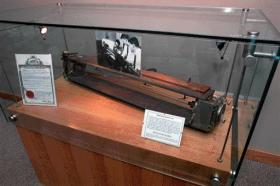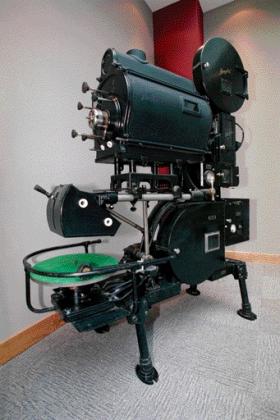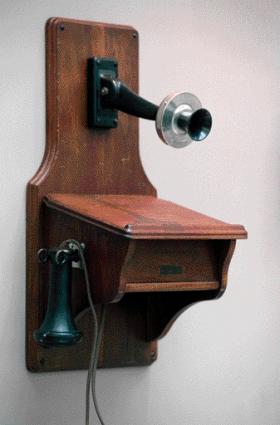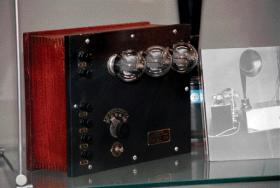
Bell Labs Museum
Lucent Technologies, Blanchardstown Industrial Park, Dublin 15
01–6924384
Tours by prior appointment. Enquiries: Fiona Carpenter +353-1-6924384, fcarpenter@lucent.com
by Toby Joyce
The Bell Labs Ireland Museum presents exhibits centred on the contribution Bell Labs has made to science and telecommunications. It is an offshoot of the parent museum in Murray Hill, New Jersey, and exhibitions are regularly exchanged with the larger facility.
Bell Labs is synonymous with the enormous strides made in electronics, computing and communications in the twentieth century. Primary among its contributions was the invention of the transistor in 1948 by William Shockley, John Bardeen and Walter Brattain, all of whom received the Nobel Prize for their work. Other major advances that originated in Bell Labs are lasers and fibre-optic technology, both represented by exhibits at the museum.
The roots of communications technology go back to the mid-nineteenth century with Samuel Morse’s electric telegraph. The Bell Labs Museum also starts there, with a replica of Alexander Graham Bell’s first telephone (1876). Bell invented the telephone at the same time as his lesser-known rival, Elisha Grey, and in one of the most famous scientific races ever Bell just beat Grey to the patent office by hours (a copy of the all-important patent is on display).

This was the start of a new era, when science went from being a playing field for rich gentlemen or university-bound academics to an arena where fortunes could be made in an age of accelerating technical advancement. In this environment, a well-staffed and well-equipped research laboratory was essential.
While the Bell name may be attached to the organisation itself, his adversary’s legacy is also present. Grey’s laboratory became the research arm of the telegraph company, Western Electric. In 1925 Bell Labs was formed from the engineering department of Western Electric and parts of the engineering department of the Bell organisation, AT&T.
The museum follows the evolution of the telephone from the clumsy wall-mounted models of the 1880s through to today’s compact, touch-tone models (also invented by Bell Labs). Viewing the development of the instrument from being an article of furniture, as well as the first invasive piece of infrastructure to appear in people’s homes, to being an unremarkable, everyday object is well worth the visit.

The influence of Bell Labs on the entertainment industry is represented by a Vitaphone Projector (1926), which synchronised a long-playing record with a film reel and was the first method used to present ‘talking pictures’. Bell Labs was awarded a special Grammy in 2005 for its contribution to the music industry. Also on display is the first fax machine or ‘telephotograph’ (1925), first used to transmit photographic images for use in newspapers. Another interesting exhibit is a half-scale model of Telstar, the first communications satellite (1962), which enabled live television broadcasts across the Atlantic. The satellite contained key Bell Labs inventions such as transistors, solar cells and amplifiers.
Mobile transmission and reception of communications are now vital and everyday features of life, and here Bell Labs also made many pioneering inventions. Early models of police radios (1924), air-to-ground communications for pilots (1915) and early antenna designs are exhibited. The first personal pager, the Bellboy (1964), and the first mobile phone (1987) are also on show.
The invention of the transistor in 1948 was a seminal event in twentieth-century history, with wide-ranging effects on society as well as technology. Its capability to act as a tiny switch made possible an enormous range of devices, from the electronic computer to the iPod. It spawned the electronics industry, one of the largest industries in the world. A model of the first transistor is on display. Other exhibits deal with early lasers and fibre optics, the latter an invention that made possible the internet boom of the 1990s because of its colossal capacity to carry information. How devices are packaged, and how packaging has made major strides in miniaturisation, is also shown.
The contribution of Bell Labs scientists to fundamental science is not forgotten. Plaques commemorating the nine Nobel Prizes awarded to scientists at Bell Labs are on display. One of the most interesting is that awarded to Robert Wilson and Arno Penzias in 1989 for the discovery of the background radiation of the universe, adding support for the first time to the ‘big bang’ theory of how the universe began. Bell Labs can almost claim the ‘invention’ of radio-astronomy since it was the research of Karl Jansky of Bell Labs on radio interference in the 1930s that first detected radio waves from outer space. Wilson and Penzias were carrying on Jansky’s work on interference and discovered the background radiation in space—a sort of ‘echo’ of the ‘big bang’—by accident.
Contemporaneously with the invention of the transistor, Claude Shannon of Bell Labs was publishing his work on mathematical information theory. While Shannon (not of Irish descent, incidentally) might not be as well known as the inventors of the transistor, his work also created a new field in communications. He described mathematically the bounds on the information that can pass through a channel, and gave an elegant coding scheme that enables the theoretical bounds to be approached. In many ways, his work is as important as the transistor invention, and in recognition of this he has had a conference room named after him at the Blanchardstown plant.

Ireland has gained a real gem among science museums with the opening of this facility in March 2005.
Toby Joyce is an engineer with an interest in the history of science and technology.
